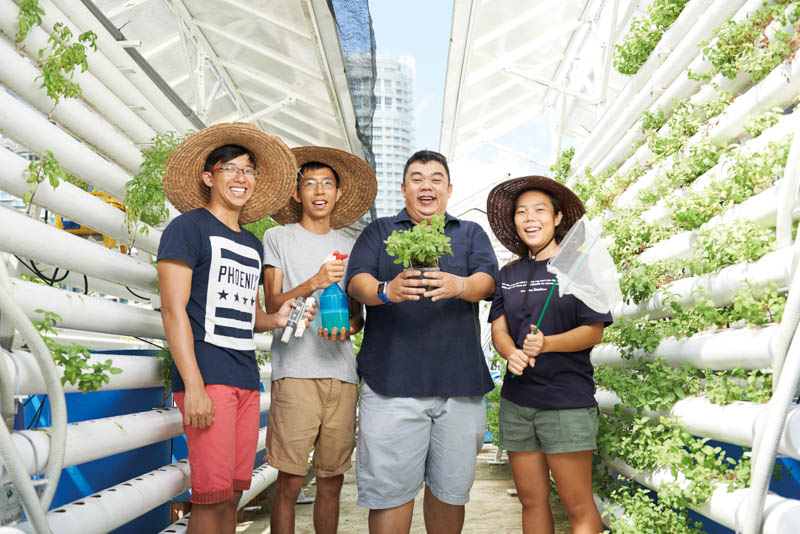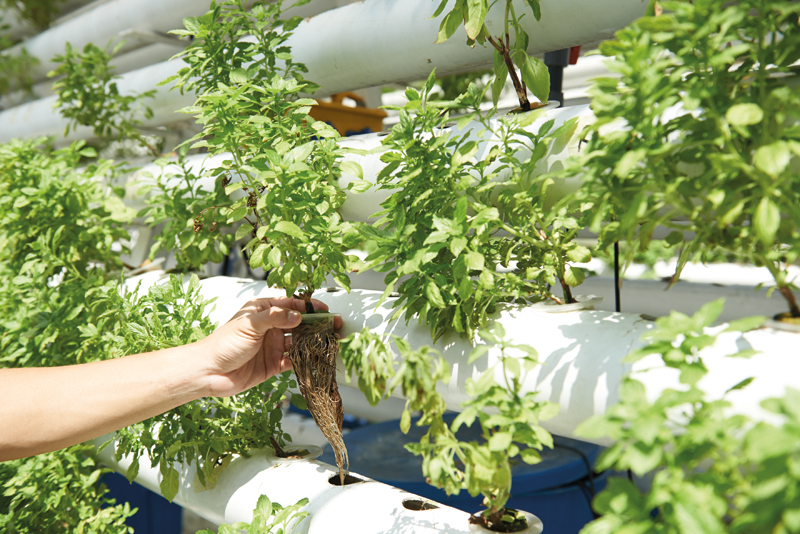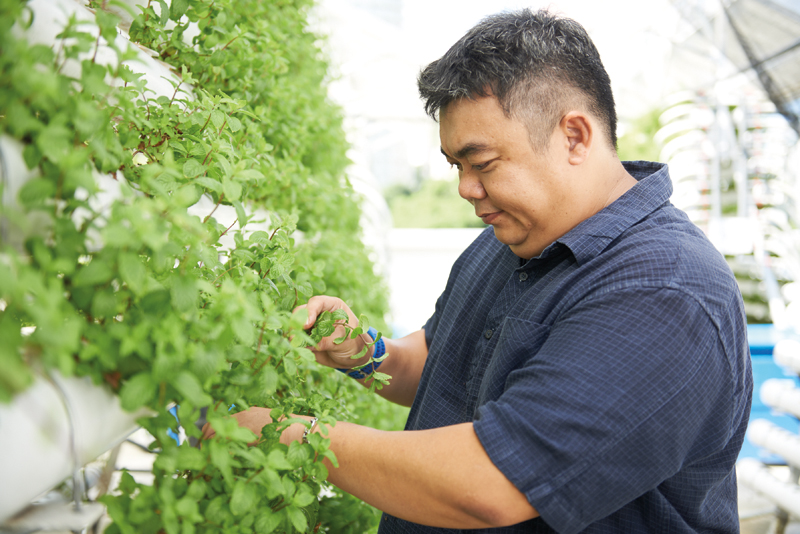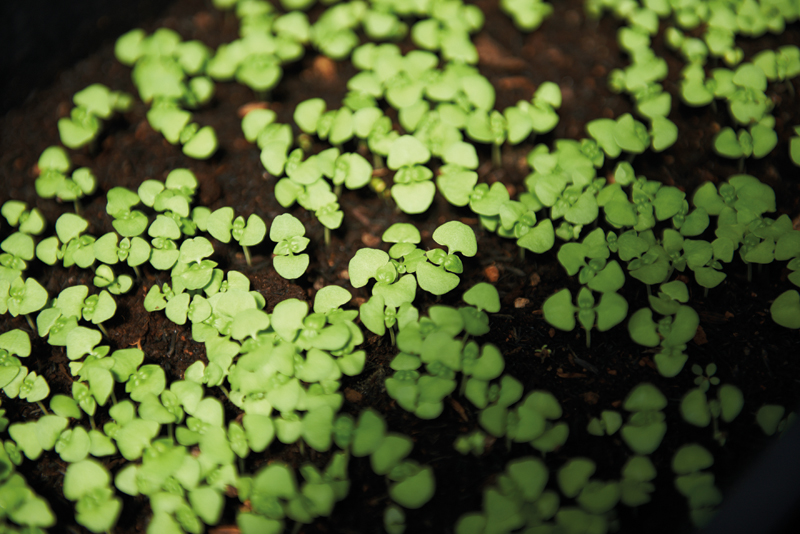Growing Crops On Rooftops: Pushing Frontiers With Urban Farming

The size of nearly two basketball courts, the farm currently produces about 60kg of food a week that is sold to nearby hotels and restaurants, at prices below that of organic imports.
On weekends, it transforms into a community farm. Students and elderly volunteers come to tend to the produce and learn how to grow their own food, knowledge they go on to share with smaller aquaponics farms in the heartlands.
The farm is the brainchild of social entrepreneur Mr Allan Lim and his three friends, who all have agriculture-related backgrounds. They set up social enterprise Comcrop to run the farm, a six-figure investment they expect to recoup this year.
Their goal was to tap the potential of “marginalised land” – land that people don’t see as useful – to bring communities closer together and to their food source.

With more food grown locally, Singapore will be better able to withstand food supply disruptions caused by trade restrictions or bad weather overseas, such as drought.
Although the farm is hardly visible from the road, it has already attracted attention for its social mission and agricultural innovation.
The crops are grown in vertical racks that draw water and nutrients from fish waste in water tanks containing tilapias. This creates a self-sustaining aquaponics system that can yield eight to 10 times more than traditional land-based farming.

Journey to the rooftop
Getting to this point was not easy: it took the team almost two years to get the farm off the ground.They were running a small test farm outside the National Youth Council Academy in 2012 when they were invited to meet the inter-agency Garden City Action Committee (GCAC) to discuss how to further green Singapore.
The GCAC’s chairperson, Ms Chang Hwee Nee, Deputy Secretary (Planning) at the Ministry of National Development, liked their idea of bringing communities together through urban farms. Her support led them to the vacant *SCAPE rooftop in 2013.
Despite securing a space, the team knew they had their work cut out for them. With no precedent, they had to figure things out as they went along.
As early as the design phase, they hit a roadblock: The team found that the building’s official roof load, or the maximum weight the roof could take, was only 50kg per square metre.
Mr Lim, who studied civil engineering, pored over the building plans and realised the figure was grossly underestimated. So he recalculated the roof load, had it endorsed by a professional engineer and eventually received approval from the Urban Redevelopment Authority and the mall to go ahead.

“They asked me, will the farm be a fire hazard?” he says. “I told them we would have thousands of litres of water so we’d likely be putting out fires instead.”
But the water could breed mosquitoes, said the officers. “After we told them we are rearing fishes that would eat up the larvae, they told us the Agri-food and Veterinary Authority Singapore (AVA) needs to be involved since we have fishes in the farm. We [would] also need to get clearance from the PUB for water drainage,” recounts Mr Lim.
While he admits the questions seemed “pesky” then, in retrospect he says they show that the Public Service “has gotten more interconnected and agencies can pre-empt the concerns of other agencies”.

Since then, the farm has opened its doors to many public officers and won their support. AVA officers, for one, have been helping to improve the farm’s operations by teaching the farmers about food hygiene and pest management, and checking on its produce.
More than just aquaponics
Still, Mr Lim feels it will take time for urban farming to gain traction among public officers.
A case in point: Comcrop’s recent application for the Productivity and Innovation Credit (a scheme under IRAS) was rejected. Mr Lim feels that the rejection could mean that not everyone in the Public Service is involved in the conversation about urban agriculture and thus some may not understand how his farm is innovative.
The hurdles, however, are not stopping Comcrop from pushing the frontiers of urban agriculture in Singapore.
It is preparing to build another rooftop farm in Woodlands, which will be 10 times bigger than its current space at Orchard Road. It aims to produce 2,000 tonnes of food over a two-to-three-year period.

He is also trying to get Singapore’s traditional farmers to embrace urban farming: “What I’ve been doing is to be humble and to learn from them so that we can improve.
“Hopefully through this, we can create a better system. Then the government will be more convinced that urban farms work and will give more land in Singapore to all farmers.”
- POSTED ON
Jul 1, 2015
- TEXT BY
Jamie Ee
- PHOTOS BY
LUMINA









